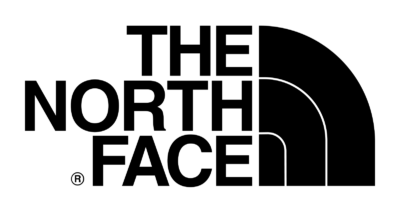this that this that
Brand Archetypes
The Explorer
The adventurers, the risk takers, the seekers of the unknown. The Explorer archetype promises a way to forge your own path, and live an authentic life.
What is the Explorer Brand Archetype?
The Explorer is the archetype that refuses to be contained. This is the brand that forges it's own path. It seeks what's possible.
Driven by Discovery, Defined by Freedom
Explorer brands are driven by an insatiable need for discovery and autonomy. They see the world as an endless frontier of experiences waiting to be uncovered. And they're not exploring for the sake of conquest or achievement, they're exploring because standing still feels like dying. Because there's always another horizon. Because freedom demands it. The map needs uncharted territory.
What are some examples of the Explorer brand?
- Jeep
- REI
- The North FAce
- AirBNB
- GoPro
- National Geographic
The Psychology of the Explorer Brand Archetype
Map this to the Enneagram and you get Type 7: The Enthusiast. The relentless pursuit of experience, and the belief that life is meant to be lived fully, widely, and without artificial boundaries.
Explorers are fueled by an almost spiritual need for freedom and authenticity. They believe conformity is death and that the richest life is found outside comfort zones. They ask: "What am I missing if I stay here?" So they go, they discover, and they never stop moving.
This is why Patagonia didn't start off my just selling outdoor gear, but rather they sell permission to abandon the cubicle and find yourself on a mountain. "Let My People Go Surfing" is a manifesto for anyone who's ever felt trapped by conventional expectations (they have since moved to an Innocent Brand). Similarly, Jeep doesn't just make SUVs for grocery runs. They create vehicles for those who see a dirt road and think "I wonder where that goes." These brands understand that their customers are in constant search of meaning through experience, and they position themselves as the enabler of that quest.
The Explorer Brand's Promise
Every Explorer brand makes the same core promise: "With us, you will discover who you really are," which is selling liberation. That is, the tools, experiences, and permission you need to break free from whatever's holding you back.
Take The North Face. They didn't become iconic by talking about technical specifications. They became iconic by positioning themselves as the partner for those who refuse to accept that mountains, deserts, and icecaps are "off-limits." "Never Stop Exploring" isn't suggesting you take up hiking—it's demanding you reject the safety of the known world. They understand that explorers don't buy gear for protection; they buy it for possibility.
Or consider Airbnb, a hospitality company that transformed itself into an Explorer brand with one singular promise: "Belong Anywhere." They're selling authentic cultural immersion, local experiences, and the freedom to live like a local anywhere in the world. They position themselves as the brand that helps you escape tourist traps and discover real connection.
The Explorer Brand's Core Values
Independence and Autonomy: Freedom isn't negotiable. It's essential. Jeep's entire brand celebrates the vehicle that can go anywhere, unbound by roads or rules. Their "Go Anywhere. Do Anything." positioning isn't about capability specs—it's about refusing to be limited.
Authenticity Over Comfort: Explorers choose real over easy every time. Patagonia lives here, creating products for genuine outdoor use rather than fashion statements, and actively discouraging overconsumption with campaigns like "Don't Buy This Jacket." They'd rather lose a sale than compromise their values.
Discovery Through Experience: Explorers learn by doing, not observing. REI embodies this with their #OptOutside campaign, literally closing stores on Black Friday to encourage people to get outside and experience nature instead of consuming. They're selling transformation through adventure, not transactions.
Individualism and Self-Reliance: Explorers forge their own path. They don't need permission or validation. National Geographic has built their brand on celebrating those who venture into the unknown—scientists, photographers, adventurers who operate beyond the boundaries of "normal" life because their curiosity demands it.
What are the Explorer Brand's Sub-Archetypes?
While all Explorers share core values, they express them differently. Understanding these nuances helps brands fine-tune their positioning and messaging.
The Adventurer
Bold and thrill-seeking, the Adventurer needs adrenaline and risk to feel alive. They want to test themselves against them. The North Face and GoPro live in Adventurer territory, celebrating extreme environments and high-stakes experiences. The Adventurer's potential pitfall can be recklessness, prioritizing thrill over wisdom, danger over growth.
The Pioneer
Visionary and purpose-driven, the Pioneer explores with intention. They're seeking something specific—knowledge, understanding, breakthrough. National Geographic embodies the Pioneer, funding expeditions that expand human knowledge about our planet. The risk? Becoming so mission-focused that the joy of discovery gets lost in the agenda.
The Seeker
Introspective and spiritual, the Seeker explores to find meaning and authenticity. They're on a quest for self-discovery through experience. Airbnb lives in Seeker territory, positioning travel as a path to cultural understanding and personal growth rather than just sightseeing. Yoga retreat brands, meditation apps like Headspace (in their explorer moments), and brands focused on "finding yourself" operate here. The trap can be navel-gazing—exploring yourself so much you forget to actually live.
The Wanderer
Spontaneous and nomadic, the Wanderer explores for the pure pleasure of movement and discovery. No agenda, no deadline, just the open road. Jeep operates as the Wanderer—their brand celebrates spontaneous detours, unplanned adventures, and the freedom to change direction on a whim. Vintage VW van culture, certain travel brands, and even Spotify (with its discovery features) tap into Wanderer energy. The danger lies in aimlessness—movement without meaning, exploration that never leads to anything.
Building an Authentic Explorer Brand
Your Freedom Must Be Real: Don't manufacture adventure. REI doesn't create fake outdoor experiences, neither should you. They serve people who genuinely want to spend days in the backcountry, and they close on Black Friday to prove they mean it.
Celebrate the Journey, Not the Destination: Show the discovery process. Honor the detours. Airbnb does this through their storytelling that focuses on unexpected connections and serendipitous moments rather than just beautiful accommodations.
Build a Community of Wanderers: Explorers may be independent, but they love finding their tribe. What Patagonia was first an Explorer Brand, they created a community of environmental activists and outdoor enthusiasts who shared values, not just interests. They hosted film festivals, supported grassroots environmental groups, and created spaces for like-minded explorers to connect.
Never Compromise Authenticity: If you claim your product enables genuine exploration, it better deliver. The North Face backs this up with gear that actually performs in extreme conditions, tested by sponsored athletes doing real expeditions. Be genuine. Be tested. Be honest.
Lead with Liberation, Not Features: Explorers don't care about specifications; they care about what becomes possible. Jeep sells the ability to disappear into the desert for a weekend with no plan and total confidence.
Respect Different Paths: Meet people where they are in their exploration journey. National Geographic serves both armchair explorers who want to learn about distant places and actual expedition leaders pushing human boundaries. The exploration is what matters, not the scale.
The Explorer archetype endures because it speaks to something fundamental: the human need for discovery, autonomy, and authentic experience. In a culture that increasingly values safety and predictability, Explorer brands celebrate the unknown, the uncertain, and the transformative power of venturing beyond boundaries.
They remind us that we're meant to wander. That conformity kills the soul. That the most meaningful experiences happen when we leave our comfort zones. And that true freedom is found not in security, but in the courage to explore.
The Explorer Connection Strategy
To appeal to an Explorer you need to make them feel a sense of belonging. Brands that revolve around everyday activities might use this archetype with the message that it’s ok to be normal.
Home or family life brands fit this archetype perfectly, while elitist positioning or “we’re better” messaging would be a turn-off. Appealing to an Explorer requires honest, humble, friendly and down to earth communication that doesn’t exclude.
The Explorer Brand Voice
Explorer brands speak to their audience with a confident, encouraging tone. They want the audience to discover new experiences for themselves, so they communicate with a relatable, empowering tone that inspires customers and clients to join them on they adventure.
The Explorer Brand Colors

Explorer Brand Examples




